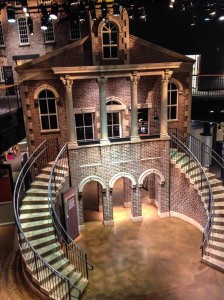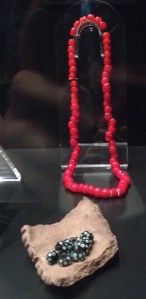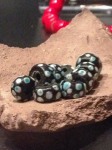 Last Friday, I was down in Greenville, South Carolina for my twin brother’s wedding. My family and I flew into Charlotte, getting into Greenville around 11:30 in the morning. We had a good 4 hours before we could check into the inn we were staying at, and when faced with such situations, my family tends to find a local museum. So that’s exactly what we did.
Last Friday, I was down in Greenville, South Carolina for my twin brother’s wedding. My family and I flew into Charlotte, getting into Greenville around 11:30 in the morning. We had a good 4 hours before we could check into the inn we were staying at, and when faced with such situations, my family tends to find a local museum. So that’s exactly what we did.
The Upcountry History Museum may seem relatively small, but there’s a lot of history packed into that building. They talk about the history of the area from pre-colonial times to present day, at least as much as they can in the space they have. Personally, I was thoroughly impressed with the quality of the exhibits.
 I love smaller museums, probably because I’ve worked in so many of them. I also just love poking around all the nooks and crannies, because you know they’re using all the space they can for their exhibits. And smaller museums usually have really fantastic beads on display.
I love smaller museums, probably because I’ve worked in so many of them. I also just love poking around all the nooks and crannies, because you know they’re using all the space they can for their exhibits. And smaller museums usually have really fantastic beads on display.
And the Upcountry History Museum has some pretty fantastic beads. I managed to find them immediately, ogled at them for a minute while getting very excited, then looked up to find my family had disappeared. I found them in the next room, but only after taking loads of photos of these beads (no flash, which is why they’re grainy).
There are two bead types here, both of which are wonderful to see. The red ones are called Cornaline d’Allepo beads, and are made by wrapping translucent scarlet glass around an opaque white or yellow core that has either been drawn or wound. I have seen examples of these in India and Scotland, and they can be found all around North America, too. In some areas, they’re called Hudson Bay beads.
The name comes from the French word “cornaline,” or carnelian, and Aleppo, a city in Syria, which has sadly been devastated as a result of the conflict there over the last 4.5 years. They were made in Venice and Murano beginning in the 17th century and continuing to 20th, and their connection to Aleppo is currently unknown.
 The second bead type is a relatively simple eye bead. Eye beads are found the world over, but these are most likely also Venetian. The appear to be an opaque black glass with white eyes and turquoise pupils, but they were in a case, so I can’t tell if the black was a true black of a very dark translucent blue, purple, or green.
The second bead type is a relatively simple eye bead. Eye beads are found the world over, but these are most likely also Venetian. The appear to be an opaque black glass with white eyes and turquoise pupils, but they were in a case, so I can’t tell if the black was a true black of a very dark translucent blue, purple, or green.
As always, I highly recommend checking out the rest of the museum, not just the beads. The exhibits cover a lot of South Carolina’s history in highly creative ways, and there are lots of exhibits that are child-friendly. So if you’re every around Greenville, South Carolina, stop on in and take a look!
To get to the Upcountry History Museum, follow I-385 of I-185 into downtown. If coming on I-385, it will change to East North Street, then Beattie Place. If coming on I-185, it will turn into Church Street/US-29; follow it downtown and make a left on Beattie Place. Follow Beattie Place until you cross over Academy Street and pass the Hughes Main Library. At the next light, turn right onto Atwood Street and you’ll find museum parking on the right.


